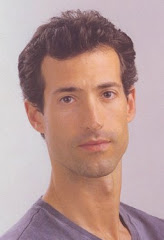Lately, the fitness world has been swept up in the latest “terminology” trend, which is functional fitness. Just a few years ago, it was the term “core” that had everyone rushing to learn side plank and other new(not) exercises that work on stability. The latest trend again co-opts from Pilates the idea that practiced movement should be related to how we naturally move everyday. Joseph Pilates studied moving images of how animals and humans moved and incorporated this into his philosophy of Contrology. All Pilates movements involve awareness of alignment and moving from your center. Yogilates adds to this the awareness of using the breath to release unnecessary tension before, during, and after movements. The result is not just functional exercise, but a functional mindset; one that transcends regular exercise and ingrains into our minds and bodies an efficiency and accuracy the leads to longevity in everyday living. This integrative adaptation to training only comes from a process that begins first with learning how to relax the mind and body into an optimal state for training. The relaxation response (The Relaxation Response, by Herbert Benson, Miriam Z. Klipper) is easy to attain in a Yogilates class through focus on the breath and clearing the mind of distractions. From there, one begins isolated articulations to learn to move body parts individually and sense gravity’s effect on the body in supine position. The next steps are stabilization through oppositional force and controlled momentum. This involves learning how various muscles work in concert to maintain the integrity of optimal alignment in the spine and joints of the body. Progressing onward, one gets to performing movements focused on the quality of the movement and whole body integration, meaning being aware of all of the body and controlling the speed, the range, the stabilizing forces, and the breath all at the same time. The lesson then returns back to simple isolations, but now with the body in new positions (supine, quadraped, sitting, standing, etc.), and repeats the progressive learning steps.
Here is where we see the big mistake of the functional promoters who start right away teaching multi-planar movements because they are more functional than other exercises. Doing multi-planar movements, such as torso twists with one-leg lunges, should be done to help range of motion and coordination, but only with great attention to control and alignment considerations, which can only be maintained if the mind/body is prepared for it. The movement itself doesn’t necessarily imbue awareness to the practitioner. The mind of the practitioner needs to know what it is supposed to be feeling, and that doesn’t happen automatically. As Joseph said about breathing correctly, “-this all important function requires individual instruction, not only by precept, but by example.” That can be said for all elements of functional fitness. Sadly to say, most instructors just don’t have sufficient background in teaching awareness based movement to know how to begin teaching by example.
Becoming truly functional in movement has to include this progression of learning, as it is the mind that must achieve awareness before the body is directed. Just putting the body into a position without first educating the person on how to maintain ideal alignment with optimal balance is pointless. So really, there are no such things as functional exercises without a functional learning process that precedes the movement. Another way of looking at it is that any movement can be made functional if one taps into the deep awareness of whole body integration when doing it. In Yogilates training, it is all about developing awareness and learning to use your senses to teach yourself beyond the examples of movement done in class and apply the process to everyday living. Take a moment each day to circle your arms, your shoulders, your hands, feet, hips. Feel reaching around in space and also the space inside your body, your joints and torso. Breathe deeply and notice how the ribs expand and release. Stand or sit tall and feel flexible in the spine and naturally supported from your core. This is all functional fitness, and it should feel right in your body and mind.
Subscribe to:
Post Comments (Atom)

No comments:
Post a Comment